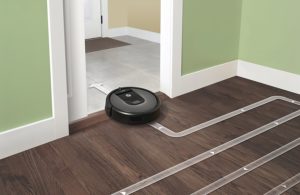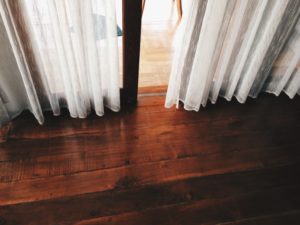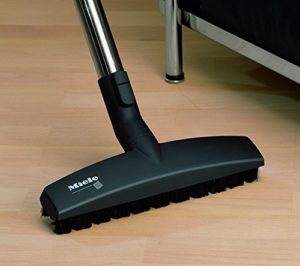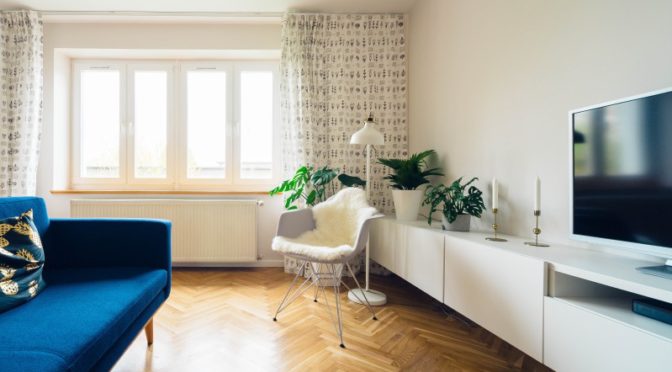
Whether you use hardwood floors or other kinds of bare flooring like tile, vinyl, or laminate, you’re going to need to take care of it if you want it to last. Think about it: your floors cover every square inch of walking space, and as visual and sensual creatures, how your floors look and feel will impact how you perceive your living space. In other words, you want to take care of your floors so they take care of you, whether practically (by supporting you and providing you with living space), aesthetically (by looking appealing to the eye), or emotionally (by giving you a sense of security and comfort). Today we’ll look at how to care for all kinds of bare flooring.
Keep up with sweeping, vacuuming, and mopping

It might sound obvious, but the simplest and perhaps most effective way to maintain any kind of bare flooring is to keep it clean. Every floor wears down with time, no matter how hard it may be. Part of the erosion and degradation is due to foot traffic, but dirt and dust also speed up the process, acting like microscopic sandpaper and scratching your flooring. If you don’t make a habit of cleaning, whatever sheen or luster your flooring has will disappear, and you’ll start to notice the difference–in a bad way–in your floors over time.
The solution? Sweep, vacuum, and mop when appropriate. Make it a habit to clean your floors to remove dirt, dust, grime, and other abrasive elements. Regular cleaning won’t completely erase the effects of using a bare surface, but it can slow the process of decay down enough to the point where it’s irrelevant. If you don’t want to vacuum or mop by hand, there are a range of robotic vacuums and mops that will do the work for you. While they won’t offer the suction of full-sized vacuums or the power of a manual mop wielded by an adult in full-on cleaning mode, they’ll still do a good enough job in many cases to allow you to vacuum or mop with a much lower frequency. The Roomba 960 (reviewed here) is a great robotic mop, while the Braava 380t (reviewed here) is a good robomop.
Make sure your floors are sealed and finished

While most variations of bare floors are hard, the truth is that every floor is vulnerable. This is particularly true if you expose your floors to spills and stains on a regular basis, as well as any kind of liquid.
The solution? Seal and finish your floors as indicated by their manufacturers. Tile floors, for example, will frequently need sealing for two reasons: the first is to protect the tile itself, which is exposed to foot traffic and stains, and the second is to keep harmful elements from entering your grout lines and damaging them. You’ll want to seal your tile on an annual basis to keep it looking and functioning at its best. If you’re dealing with hardwood flooring, maintenance will generally involve finishing it with polyurethane. Keep in mind that you’ll need to reapply polyurethane every time you complete a refinishing project.
If you have pets, care for them to care for your floors

While we love our pets, they can be problematic when it comes to caring for floors (not to mention due to the allergies they can provoke). Dogs and cats have claws that can and will scratch certain kinds of floors (e.g., carpets, soft wood flooring, padded vinyl, and cork ). Cats will be fond of scratching deliberately, as this is how they naturally sharpen their claws. Dogs, while not generally fond of scratching, are fond of digging, and as some weigh much more than cats, some are much more likely to damage floors when simply running over them to greet you (or the groceries you just brought in). If you have pets and want soft floors, you’ll want to keep your pets’ claws trimmed to keep them from accidentally damaging more pliable flooring.
Which vacuum cleaners best care for bare floors?

As we’ve noted above, you can typically care for most bare floors by sweeping, vacuuming, or mopping them as needed. However, while brooms will work in a pinch, vacuums are generally more effective due to greater levels of suction and an ability to clean and remove dirt immediately instead of simply pushing it from place to place. Vacuums with Parquet heads are particularly useful; a good Parquet head, such as one you’ll find in a Miele Complete C3 Cat & Dog (reviewed here and here) or Miele Compact C2 Electro+ (reviewed here and here), will remove dirt, dust, and pet hair efficiently without scratching even the softest floors. The aforementioned vacuums are also equipped with powered electric heads that make them equally capable of cleaning low-pile, medium-, and high-pile carpeting efficiently.
![]() You can buy the Miele Complete C3 Cat & Dog here on Amazon or buy the Miele Compact C2 Electro+ here.
You can buy the Miele Complete C3 Cat & Dog here on Amazon or buy the Miele Compact C2 Electro+ here.
![]() Canadians can buy the Miele C3 Cat & Dog here or buy the Compact Electro+ here.
Canadians can buy the Miele C3 Cat & Dog here or buy the Compact Electro+ here.
 If you find our research on PMC helpful, you can follow our efforts to keep maniacally reviewing home cleaning tools by shopping through our links above. We promise to keep fighting the good fight against every horror children, animals, and grown, yet messy humans can inflict upon a clean home.
If you find our research on PMC helpful, you can follow our efforts to keep maniacally reviewing home cleaning tools by shopping through our links above. We promise to keep fighting the good fight against every horror children, animals, and grown, yet messy humans can inflict upon a clean home.

